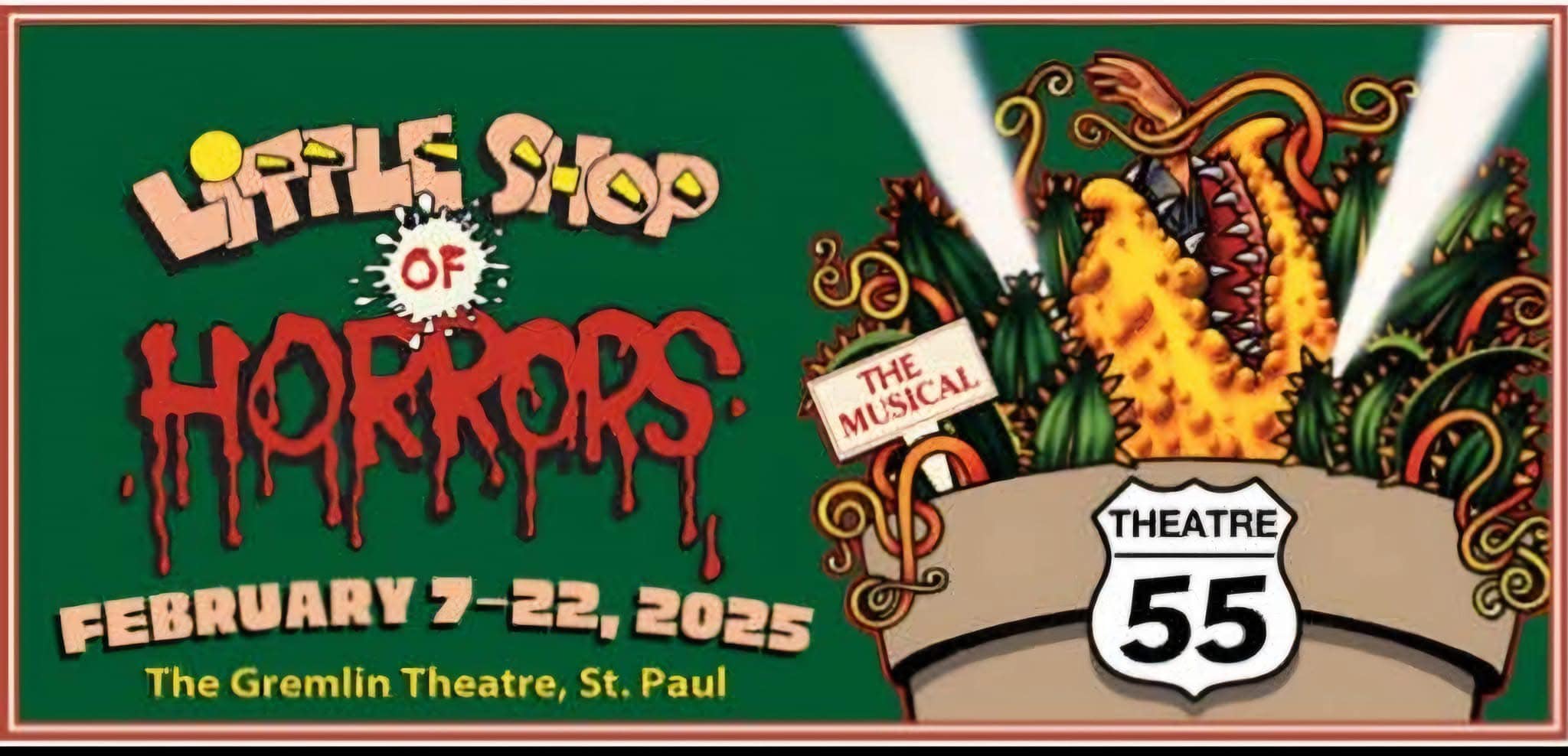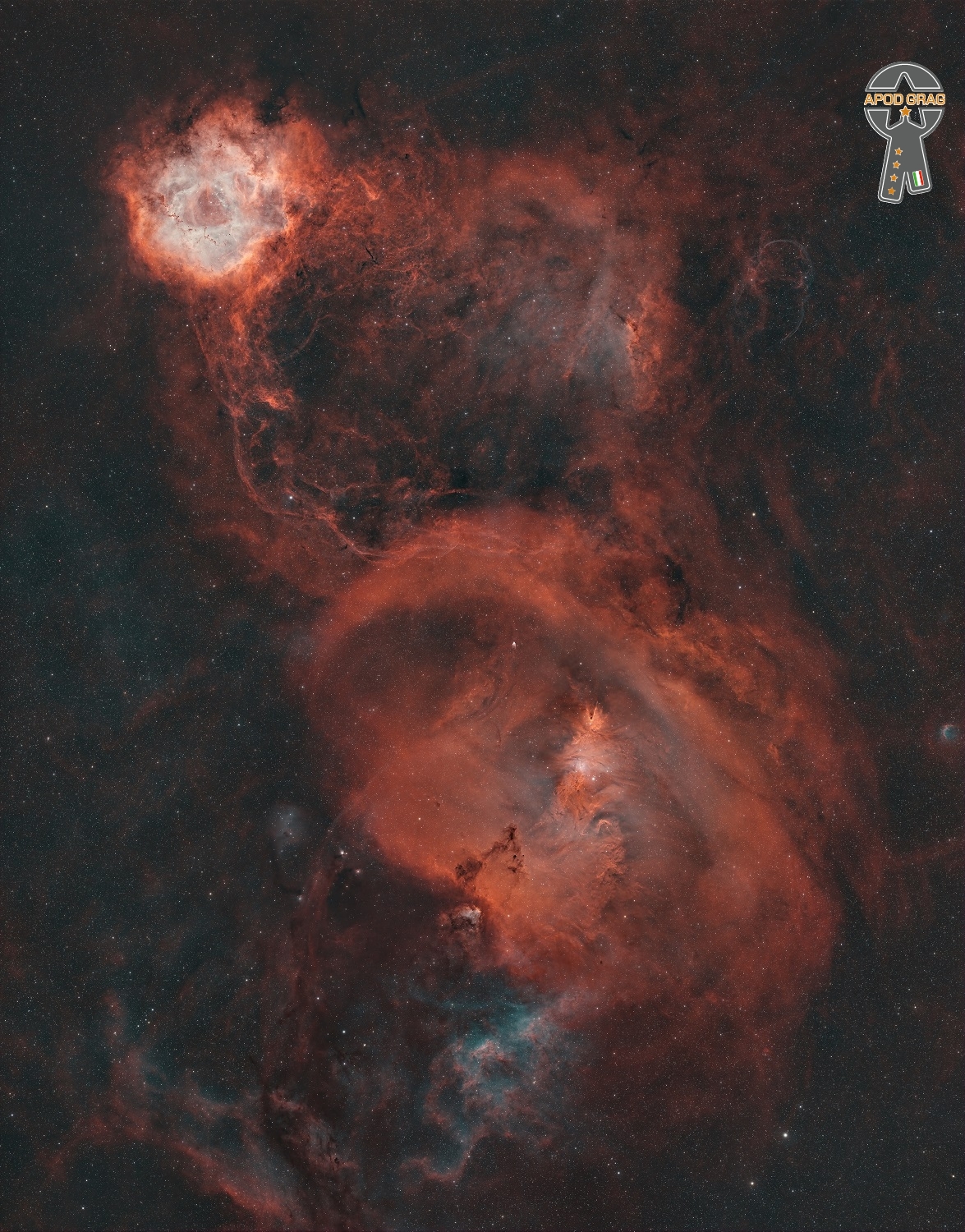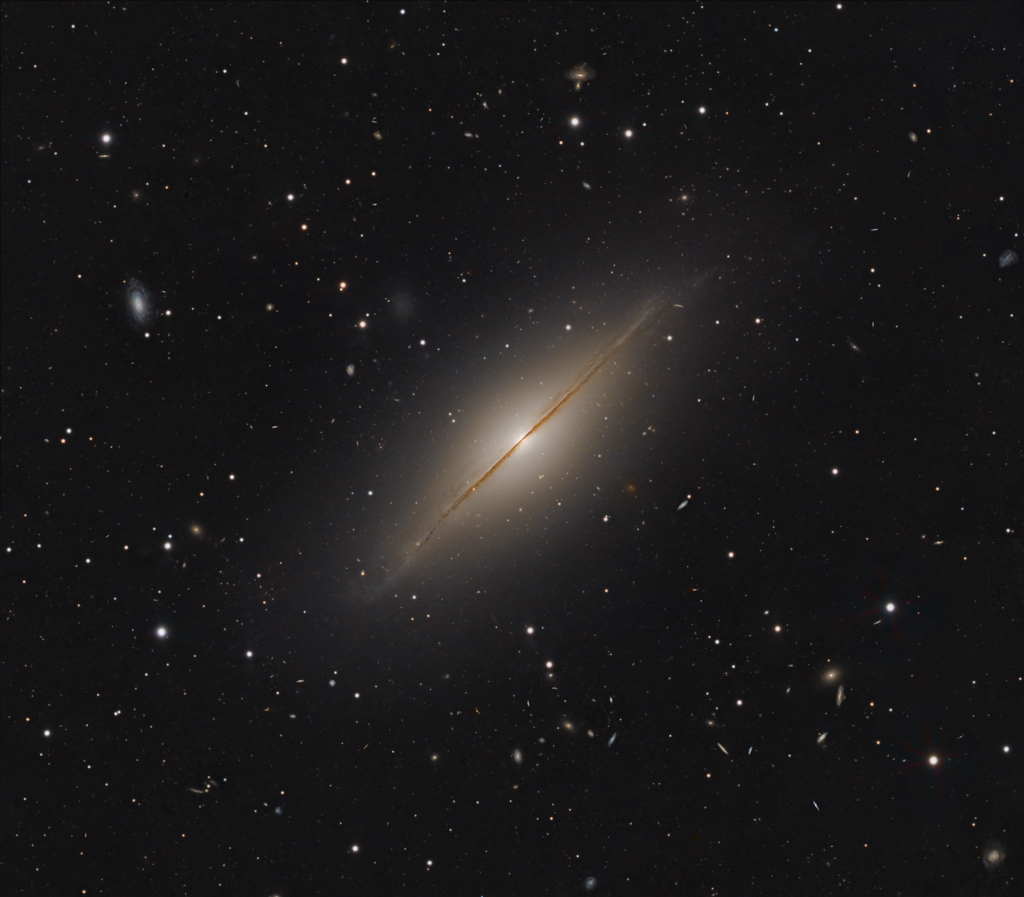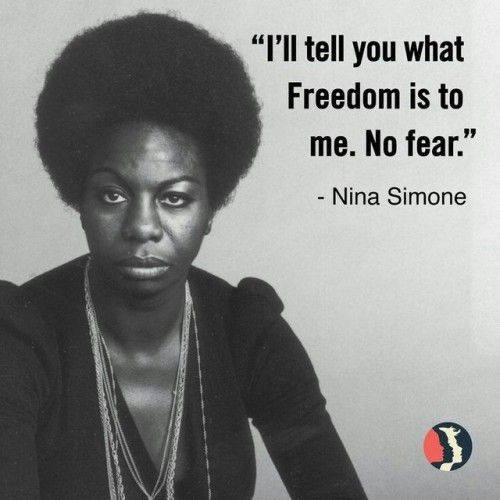Blog

Friday January 24th 2025 6pm Nefesh Erev Shabbat Service with the congregational orchestra and weekly ensemble with Inbal Sharett-Singer, Jayson Rodovsky, Jeff Bailey, Pete Whitman and mick laBriola
more...The Rosette Nebula (also known as Caldwell 49) is an H II region located near one end of a giant molecular cloud in the Monoceros region of the Milky Way Galaxy. The open cluster NGC 2244 (Caldwell 50) is closely associated with the nebulosity, the starsof the cluster having been formed from the nebula’s matter.
The nebula has been noted to be having a shape reminiscent of a human skull, and is sometimes referred to as the “Skull Nebula”. It is not to be confused with NGC 246, which is also nicknamed the “Skull Nebula”.

Joe Albany (born Joseph Albani; January 24, 1924 – January 12, 1988) was an American modern jazz pianist who played bebop with Charlie Parker as well as being a leader on his own recordings.
Born in Atlantic City, New Jersey, Albany studied piano as a child and, by 1943, was working on the West Coast in Benny Carter‘s orchestra. In 1946, Lester Youngrecorded with Albany as his pianist, for Aladdin Records. Also that year, he played at least once with Parker and then 20-year-old Miles Davis. He continued for a few years afterward, and in 1957 recorded an album for Riverside with an unusual trio line-up with saxophonist Warne Marsh and Bob Whitlock on bass, omitting a drummer. Despite that, most of the 1950s and 1960s saw him battling a heroin addiction, or living in seclusion in Europe. He also had several unsuccessful marriages in this period. He returned to jazz in the 1970s and played on more than ten albums. He died of respiratory failure and cardiac arrest in New York City at the age of 63.
more...Aaron Joseph Neville (born January 24, 1941) is an American R&B and soul singer. He has had four platinum albums and four Top 10 hits in the United States, including three that reached number one on Billboard‘s Adult Contemporary chart. “Tell It Like It Is”, from 1966, also reached the top position on the Soul chart for five weeks.
He has also recorded with his brothers Art, Charles, and Cyril as the Neville Brothersand is the father of singer/keyboards player Ivan Neville.
The first of his singles that was given airplay outside of New Orleans was “Over You” (Minit, 1960). Neville’s first major hit single was “Tell It Like It Is“, released on a small New Orleans label, Par-Lo, co-owned by local musician/arranger George Davis, a friend from school, and band-leader Lee Diamond. The song topped Billboard‘s R&B chart for five weeks in 1967 and also reached No. 2 on the Billboard Hot 100 (behind “I’m a Believer” by the Monkees). It sold over one million copies, and was awarded a gold disc.
Neville released his first solo album since the late 1960s in 1986 with the independent release Orchid in The Storm. In 1989, Neville teamed up with Linda Ronstadt on the album Cry Like a Rainstorm, Howl Like the Wind which included four duets by the pair. Amongst them were the No. 1 Grammy-winning hits “Don’t Know Much” and “All My Life“. “Don’t Know Much” reached No. 2 on the Hot 100, and was certified Gold for selling a million copies, while the album was certified Triple Platinum for US sales of more than three million.
more...James Robert Forrest Jr. (January 24, 1920 – August 26, 1980) was an American jazz musician who played tenor saxophone throughout his career.
Forrest is known for his first solo recording of “Night Train“. It reached No. 1 on the Billboard R&B chart in March 1952, and stayed at the top for seven weeks. “Hey Mrs. Jones” (No. 3 R&B) and “Bolo Blues” were his other hits. All were made for United Records, for which he recorded between 1951 and 1953; he recorded frequently as both a sideman and a bandleader.
Born in St. Louis, Missouri, United States, Forrest played alongside Fate Marable as a young man. He was with Jay McShann in 1940-42 and with Andy Kirk from 1942 until 1948 when he joined Duke Ellington. During the early 1950s, Forrest led his own combos. He also played with Miles Davis, in early 1952 at The Barrel Club. After his solo career, he played in small combos with Harry “Sweets” Edison and Al Grey, as well as appearing with Count Basie.
more...“Milonga” is a flamenco style created by returnees, artists, settlers and soldiers who returned from the colonies in the late 19th century. In their songs, they evoke the American lands. “Milonga” from Argentina is a style that comes from the “payada de contrapunto” and has deep connections in the rhythmic-metric and harmonic plane with tango from Antilles and “habanera”. The evolution of “milonga” from Argentina, until it reached its final style, began probably with “Yarabi” and other styles or “tristes”. In 1860, “triste” turns into “milonga” and was very popular between 1880 and 1910. The first “milonga” with flamenco character and “tango-tiento” rhythm is the one that Pepa Oro (bullfighter Paco de Oro’s daughter) popularised when she arrived in Spain at the end of 19th century. It is a style that comes from the choreographic “milonga” to be singing while dancing. “Milonga” singing is syllabic. There are also some “milongas” recordings with some combinations, such as introducing a “fandango” or a “milonga with bulerías”. Rhythm is based on the “tangos–tientos” metric, but they are sometimes performed without it in order to be free.
more...Point your telescope toward the high flying constellation Pegasus and you can find this cosmic expanse of Milky Way stars and distant galaxies. NGC 7814 is centered in the sharp field of view that would almost be covered by a full moon. NGC 7814 is sometimes called the Little Sombrero for its resemblance to the brighter more famous M104, the Sombrero Galaxy. Both Sombrero and Little Sombrero are spiral galaxies seen edge-on, and both haveextensive halos and central bulges cut by a thin disk with thinner dust lanes in silhouette. In fact, NGC 7814 is some 40 million light-years away and an estimated 60,000 light-years across. That actually makes the Little Sombrero about the same physical size as its better known namesake, appearing smaller and fainter only because it is farther away.

Gary Burton (born January 23, 1943) is an American jazz vibraphonist, composer, and educator. Burton developed a pianistic style of four-mallet technique as an alternative to the prevailing two-mallet technique. This approach caused him to be heralded as an innovator, and his sound and technique are widely imitated. He is also known for pioneering fusion jazz and popularizing the duet format in jazz, as well as being a major figure in music education from his 30 years teaching at the Berklee College of Music.
more...
Curtis Counce (January 23, 1926 – July 31, 1963) was an American hard bop and West Coast jazz double bassist.
Counce was born in Kansas City, Missouri and moved to California in 1945. He began recording in 1946 with Lester Young, and in the 1950s in Los Angeles with musicians such as Shorty Rogers, Stan Kenton, Shelly Manne, Lyle Murphy, Teddy Charles, and Clifford Brown. Counce formed his quintet in 1956 featuring tenor saxophonist Harold Land, trumpeter Jack Sheldon, pianist Carl Perkins and drummer Frank Butler. Elmo Hope replaced Perkins after his death at age 29 in 1958. Gerald Wilson replaced Sheldon on some recordings. The four albums originally released on Contemporary Records were reissued in 2006 on a double CD by Gambit Spain. Counce died in Los Angeles, California, of a heart attack. He was survived by his wife, Mildred Counce, his daughter, Celeste Counce, and a son. Counce’s son, born April 10, 1961, was placed for adoption by his biological mother. Curtis knew of his son, but due to his life circumstances, Counce could not be a part of his life. Curtis’s son died on January 23, 2022.
more...Jean Reinhardt (23 January 1910 – 16 May 1953), known by his Romani nickname Django
, was a Belgian-French Manoucheor Sinti jazz guitarist and composer. Since he was born on Belgian soil, in Liberchies, he is also often named a Belgian musician. He was one of the first major jazztalents to emerge in Europe and has been hailed as one of its most significant exponents.
With violinist Stéphane Grappelli, Reinhardt formed the Paris-based Quintette du Hot Club de France in 1934. The group was among the first to play jazz that featured the guitar as a lead instrument. Reinhardt recorded in France with many visiting American musicians, including Coleman Hawkins and Benny Carter, and briefly toured the United States with Duke Ellington‘s orchestra in 1946. He died suddenly of a brain hemorrhage in 1953 at the age of 43.
Reinhardt’s most popular compositions have become standards within gypsy jazz, including “Minor Swing“, “Daphne”, “Belleville”, “Djangology”, “Swing ’42”, and “Nuages“. The jazz guitarist Frank Vignola said that nearly every major popular music guitarist in the world has been influenced by Reinhardt. Over the last few decades, annual Django festivals have been held throughout Europe and the U.S., and a biography has been written about his life. In February 2017, the Berlin International Film Festival held the world premiere of the French biographical film Django, based on Reinhardt’s life.
more...Garth Hudson, who played the Lowrey organ, synthesizers, accordion, and woodwind with the Band, died in his sleep this morning (January 21), the Toronto Star reports. Hudson’s estate executor confirmed the news to The Star. Hudson was 87 years old.
Eric “Garth” Hudson was born to musician parents in Windsor, Ontario, before the family moved to London, Ontario, and enrolled him in formal piano and theory training from a young age. In his early twenties, to his parents’ alarm, he joined Ronnie Hawkins and Levon Helm in a rock band called the Hawks, assuaging his parents by stipulating that the group pay him an extra $10 a week for music lessons. He was the lineup’s final addition, joining fellow Canadians Robbie Robertson, Rich Manuel, and Rick Danko, as well as Helm and the soon-to-depart Hawkins; Hudson would go on to be the last surviving member of the Band. Impressed with their live energy, Bob Dylan hired the Hawks in 1965 to be his backing band. They played on his electric tour in 1966, developing material for Blonde on Blondeand the sprawling Basement Tapes. Minus Dylan, the group released its first album as the Band in 1968, Music From Big Pink. The record included “The Weight,” now a classic, as well as the Band’s versions of Dylan’s “I Shall Be Released” and the murder ballad “Long Black Veil.”
more...More Posts
- Phil Collins
- Marty Balin
- Roger Humphries
- Tubby Hayes
- Ahmed Abdul-Malik
- World Music with Rocky Dawuni
- Daily Roots with Hugh Mundell
- Surviving the Pandemic and Realizing Racial Justice
- The Cosmos with NGC 613
- James Jamerson
- Ed Shaughnessy
- Flamenco Fridays with José Almarcha
- Daily Roots with Bob Marley
- Surviving the Pandemic and Realizing Racial Justice
- The Cosmos with M66
- King Tubby
- Bob Moses
- Ronnie Scott
- World Music with Betsayda Machado
- Daily Roots with Sidney Rogers


